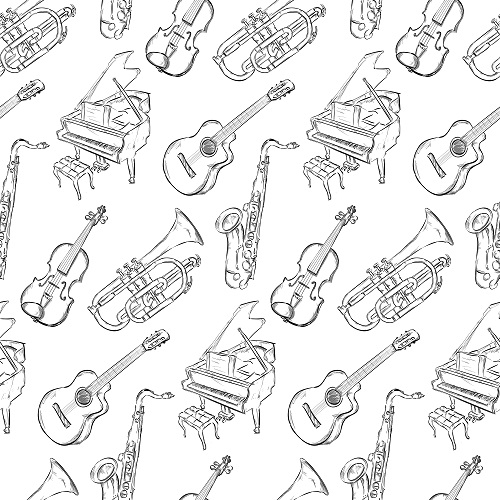
Study piano with a Prospect Music Lessons teacher! Almost all of our teachers play Piano. They all teach beginner and intermediate students, however, each teacher has their own individual strengths as a pianist. If you or your child want to take Brooklyn Piano Lessons, schedule a free 15 minute online session now so Braden can evaluate your level and decide which teacher would be the best fit for you!
Find the Right Piano for You
There are several types of Pianos that one can purchase if you want to start taking Brooklyn Piano Lessons. Unless you happen to have an acoustic Piano in your home, an Electric Keyboard is the way to go. Some of the most popular brands for an inexpensive entry-level Keyboard are Roland, Yamaha, Korg, and Casio. Look for a full 88-key range. Some of the cheapest Keyboards have fewer keys – these would work for a beginner but would need to be replaced before moving on to more advanced studies. Also, while not quite as important, weighted keys are recommended. This will make your Keyboard feel a bit more like an acoustic Piano. But if you have the space and can afford it, an acoustic Upright Piano or even a Grand Piano would be an excellent addition to your home! Though you would need to have it professionally tuned twice a year – Prospect Music Lessons can recommend a fantastic piano tuner for you.

All Levels of Students
Prospect Music Lessons teachers start beginner students with the book Alfred’s Basic Piano Method, either the Kids edition or the Adult edition. It’s a series of comprehensive instruction books that take a well-paced step-by-step approach to learn Piano, with a focus on reading music. Intermediate students will likely continue in the series but may move on to learning to play simple pop songs by learning chord voicings in both hands. Advanced students likely will build classical/pop repertoire, learn jazz improvisation, or learn how to accompany themselves while singing.

Intermediate to Advanced students studying classical piano would work on sight reading, technique, sound, and other musical skills through the study of some of the greatest composers of the instrument – Mozart, Beethoven, Bach, and more. Popular pieces such as Fur Elise, Moonlight Sonata, and Bach’s Prelude in C Major from the Well Tempered Clavier. Students who are interested in studying Jazz will learn extended chord voicings, scales and arpeggios, and improvisation techniques. We’ll listen to and learn from the masters, such as Thelonius Monk, McCoy Tyner, and Chick Corea. Jazz improvisation is also a great study for students who want to play Blues and Rock piano.
Use Your Voice
All students who take Brooklyn Piano Lessons with a Prospect Music Lessons teacher are highly encouraged to sing, whether for ear training purposes or to sing their favorite songs! Many students of piano want to learn to sing and play songs by artists such as Billy Joel, Elton John, John Legend, and others. Intermediate to Advanced students that choose to follow this route will work heavily on learning left bass/octave/5th techniques with right hand chord voicings through studying these tunes. Piano Man, Crocodile Rock, and All of Me are popular choices by the previously mentioned artists.
Write Your Own Songs
Another great reason to study Piano is Composing. Since the notes are all laid out in a line, and two hands can easily play up to 10 notes at once, Composers use the Piano more than any other instrument to write songs. Students currently studying another instrument may choose to also learn some piano to assist in writing their own music. Our Brooklyn Piano Lessons can focus on using the piano to compose music if that is the student’s goal. We’ll learn more about the Melodic, Harmonic, and Rhythmic aspects of writing music. Students will study Melody writing through the use of scales and chord tones, and how to balance consonance and dissonance (the “good notes” and the “bad notes”). Students will also learn about Harmony through the study of chord progressions and how they fit inside and outside a specific key. Popular progressions such as the Pop I-V-vi-IV, 12-bar Blues, and AABA will be discussed. Rhythmically, students will practice arpeggio patterns with a metronome to develop steady time. More difficult rhythms will be first practiced without the instrument, clapping until it is internalized.

